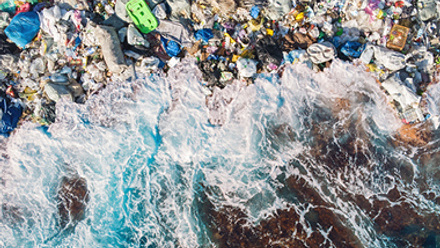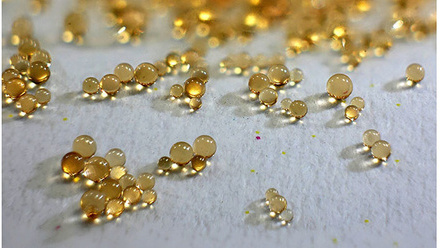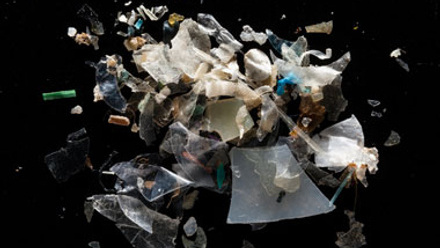Micro (Nano)Plastics: Occurrence, Fate, Uptake, and Mechanistic Approaches to Understand Their Risk for the Environment and Human Health
Carlos Edo, Universidad de Alcalá; Francisca Fernández-Piñas, Universidad Autónoma de Madrid; Miguel Oliveira, Universidade de Aveiro; Craig Warren Davis, ExxonMobil Biomedical Sciences, Inc.
The session titled, "Micro (Nano)Plastics: Occurrence, Fate, Uptake, and Mechanistic Approaches to Understand Their Risk for the Environment and Human Health," took place during the 33rd Annual Meeting of SETAC Europe held in Dublin from 30 April–4 May.
Session Organization
The event was structured into three distinct sub-sessions. The initial two sub-sessions consisted of four platform presentations, each spanning 10 minutes, followed by three five-minute poster spotlights. In the afternoon, sub-session three unfolded as a poster corner session, encompassing five diverse discussion topics.
All the sessions garnered immense public interest, drawing a significant number of attendees, who were also engaged in the discussion of the topics presented fostering a vibrant scientific atmosphere and encouraged open and insightful debates.
The main thread of the sub-sessions is summarized below.
MPs/NPs Characterization, Fate and Their Effects on Human Health
The main objective of this session was to address the lack of standardization in the detection and identification of microplastics (MPs) and nanoplastics (NPs) by showcasing relevant studies. Special attention was given to research examining the effects of MPs and NPs on various organisms, with a particular focus on their impact on the human food chain.
The session encompassed a wide range of topics concerning the fate of MPs. These included the significance of studies on plastic aging and its capacity to absorb organic matter, thereby influencing its characteristics. The role of hetero-aggregates of plastic and organic matter in nutrient cycles was also explored, their formation and their crucial importance was also discussed. Additionally, the interaction between plastics and micro-organisms was explored, focusing on the generation of biofilms and their potential effects on human health, particularly in relation to gastro-intestinal conditions and the cells that conform membranes. Furthermore, there was an examination of the respiratory system's responses to MPs, with an emphasis on understanding the responsible genes underlying these responses.
Following the platform presentations, three posters were presented as spotlights completing the session. Several innovative techniques used for detecting MPs were presented; for instance, the application of stimulated emission depletion (STED) microscopy and fluorescence was proved to be effective in this regard. Additionally, MP detection in the atmospheric compartment, which is less extensively studied, was also discussed. Finally, the detection of MPs in human placentas and the potential health implications associated with was discussed.
Absorption, Distribution, Metabolism and Excretion (ADME) and Environmental Toxicity of MPs and NPs
The second sub-session delved into various aspects concerning MPs and their impact on organisms. This included discussions on biofouling, generating biofilms with populations of micro-organisms from wastewater, and the role of MPs as vectors for contaminant dispersion and the phenomenon of biomagnification into the trophic chain. The session emphasized the need for new studies on biobased materials such as PHB (polyhydroxybutyrate), as well as the significance of cnidarian and cladoceran organisms as ecological models for different exposure experiments. Furthermore, the session focused on the development of quantitative risk assessments (QRAs), which play a vital role in decision-making, risk prioritization and regulatory compliance. There was particular emphasis on evaluating human health studies, ensuring their quality and representative nature. The session also showcased examples of risk assessments related to the soil ecosystems, drawing insights from existing literature, considering microplastic sizes and reporting observed effects. This provided valuable information on the risks faced by soil communities.
The session ended with the second poster spotlight presentation. Speakers delved into the accumulation of effects on springtail species, investigating the consequences of microplastic exposure on these organisms and the results through different generations. The examination of the effects of leachates from aged microplastics on algae was also explored, shedding light on the potential impacts arising from such leachates, and lastly, the compilation of physiological and behavioral data to translate it into ecological risk assessment (ERA), offering valuable insights into the wider ecological implications of microplastic exposure.
Poster Corner Session
In this final session, several posters were presented and discussed as an open debate, covering diverse topics. These included debates on emission models and calculated fluxes for generating Ecological Risk Assessment (ERA) models. The effects of bioplastics and plant-based plastics on organisms' toxicity were also examined and finally, the role of microplastics in carrying chemicals such as antidepressants.
Author’s contact: [email protected]






